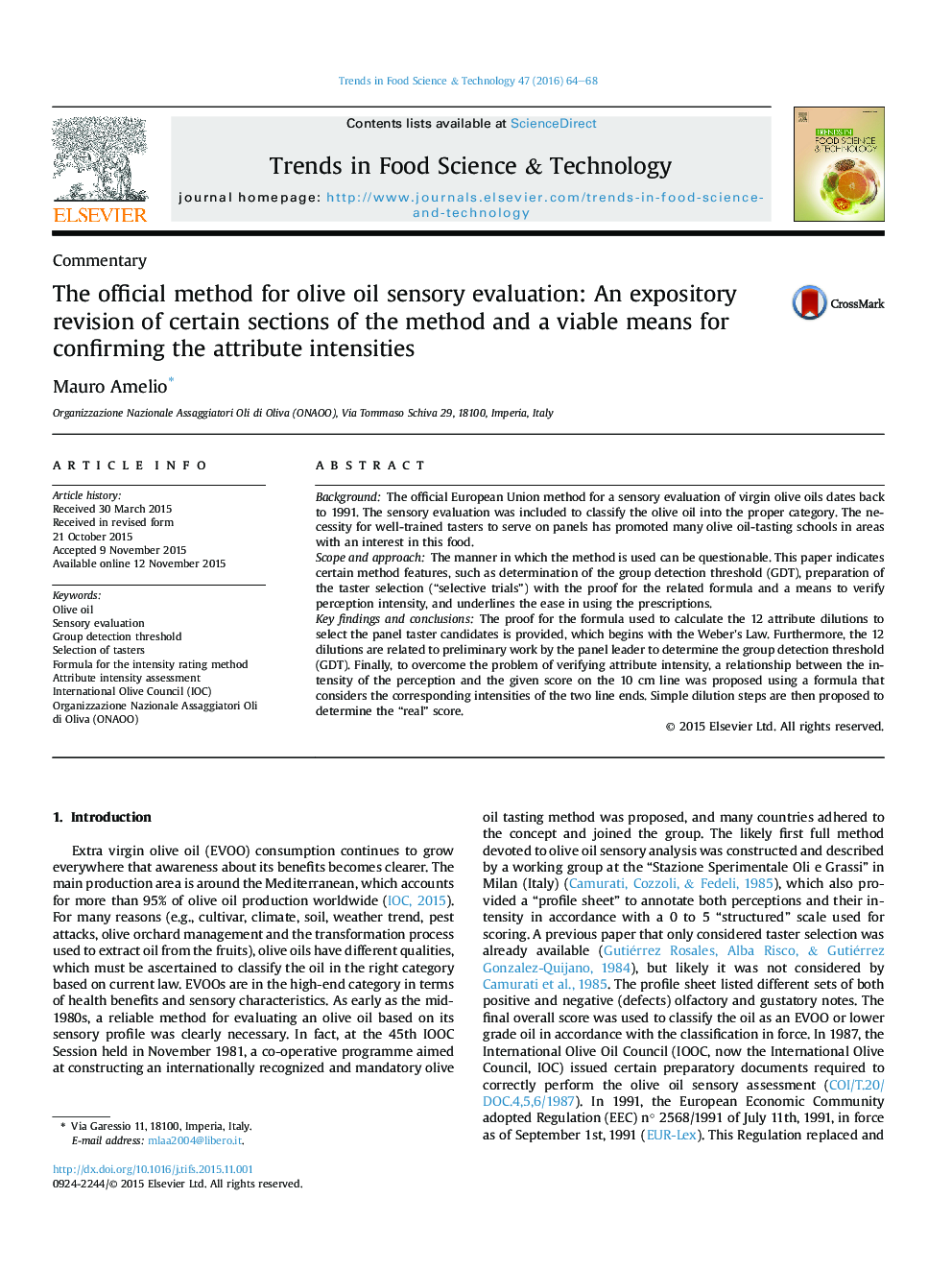| Article ID | Journal | Published Year | Pages | File Type |
|---|---|---|---|---|
| 2098569 | Trends in Food Science & Technology | 2016 | 5 Pages |
•EVOO official sensory assessment: proved the importance of some prescription and ease of use.•Taster selection: a derivation of the formula C10-n = C10 * 1.5n is provided.•The procedure to determine the GDT is correlated with the glass C1 and the “starting oil”.•The preparation of the 12 oil concentrations for taster selection is clearly explained.•Verifying the intensity: a correlation “intensity value-attribute concentration” is provided.
BackgroundThe official European Union method for a sensory evaluation of virgin olive oils dates back to 1991. The sensory evaluation was included to classify the olive oil into the proper category. The necessity for well-trained tasters to serve on panels has promoted many olive oil-tasting schools in areas with an interest in this food.Scope and approachThe manner in which the method is used can be questionable. This paper indicates certain method features, such as determination of the group detection threshold (GDT), preparation of the taster selection (“selective trials”) with the proof for the related formula and a means to verify perception intensity, and underlines the ease in using the prescriptions.Key findings and conclusionsThe proof for the formula used to calculate the 12 attribute dilutions to select the panel taster candidates is provided, which begins with the Weber's Law. Furthermore, the 12 dilutions are related to preliminary work by the panel leader to determine the group detection threshold (GDT). Finally, to overcome the problem of verifying attribute intensity, a relationship between the intensity of the perception and the given score on the 10 cm line was proposed using a formula that considers the corresponding intensities of the two line ends. Simple dilution steps are then proposed to determine the “real” score.
